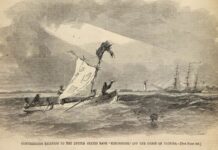On September 8, 1565, Pedro Menéndez de Avilés and nearly 1,200 Spaniards arrived on the city’s shores and named the new settlement St. Augustine in honor of the saint on whose feast day they sighted land. Archeological and archival records show that the earliest sustained presence of Africans in what would become the US occurred in the state of Florida.
Under King Philip’s rule, Menéndez would bring 500 African slaves to Florida within three years of settlement. Evidence suggests enslaved Africans from Havana, Cuba were among St. Augustine’s first settlers. While many records from the 16th and 17th Centuries are lost, documents from the Catholic Church reveal North Florida’s role in the human trade into the 1800s.
In 2015, the Middle Passage Ceremonies & Port Markers Project installed an educational marker of the transatlantic slave trade at the Mission Nombre de Dios, Menéndez’s landing site. Learn more about St. Augustine’s founding at the link below.
Explore: St. Augustine’s Founding










































